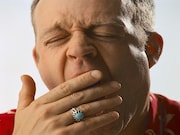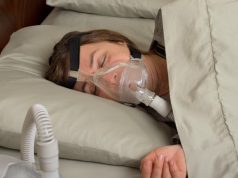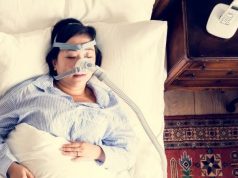Response more likely with favorable nonpharyngeal traits, moderate pharyngeal collapsibility
FRIDAY, Aug. 9, 2019 (HealthDay News) — Quantifying obstructive sleep apnea (OSA) traits using clinical polysomnography may identify an endotype-based subgroup of patients that is responsive to oral appliance therapy, according to a study published online Aug. 9 in the Annals of the American Thoracic Society.
Ahmad A. Bamagoos, M.B.B.S., from the Charles Perkins Centre at the University of Sydney, and colleagues used a clinically-applicable method to estimate OSA traits from routine polysomnography in 93 patients and examine whether they were associated with oral appliance efficacy and could predict treatment response.
The researchers found that there was a correlation for greater oral appliance efficacy with favorable nonpharyngeal traits (lower loop gain, higher arousal threshold, and lower response to arousal), moderate pharyngeal collapsibility, and weaker muscle compensation. Compared with the 39 predicted nonresponders, the 54 predicted responders exhibited greater reduction from baseline in apnea hypopnea index (AHI; 73 versus 51 percent) and a lower treatment AHI (eight versus 16 events/hour). After adjustment for clinical covariates, the differences persisted.
“Combining endotypic traits identified a ‘predicted responders’ subgroup of patients who exhibited good treatment efficacy and could potentially be targeted judiciously for early oral appliance intervention compared with a ‘predicted nonresponders’ subgroup,” the authors write. “We anticipate that identifying endotypes from routine diagnostic polysomnography will allow patient selection for oral appliance therapy in OSA.”
Several authors disclosed financial ties to the pharmaceutical and medical device industryies.
Copyright © 2019 HealthDay. All rights reserved.








